VT 270 Production Animals Sheep and Goat Management








































































































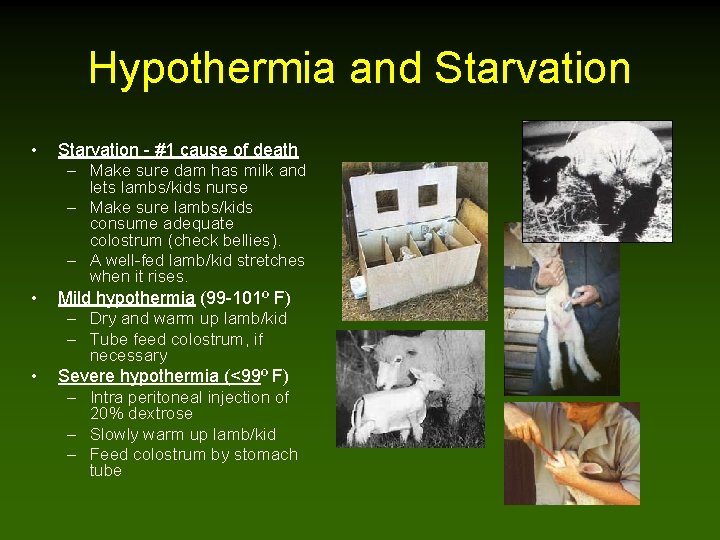
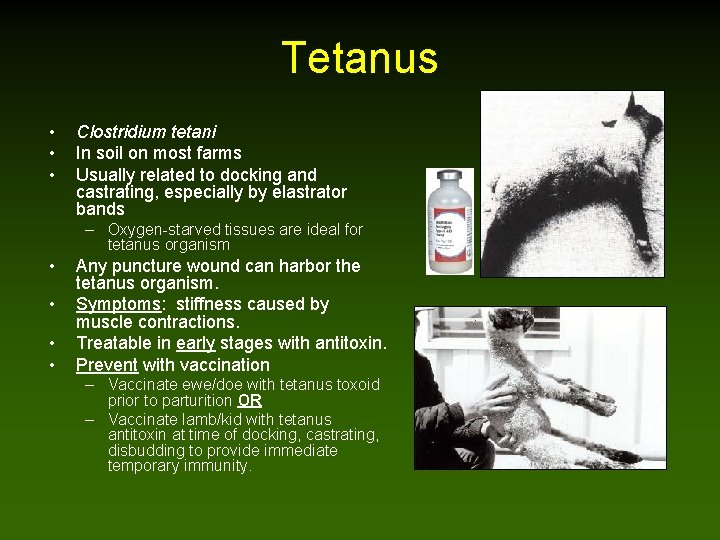

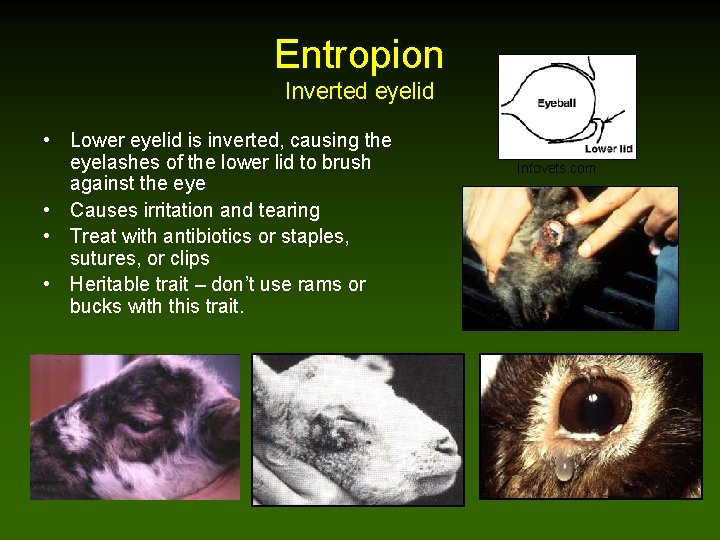
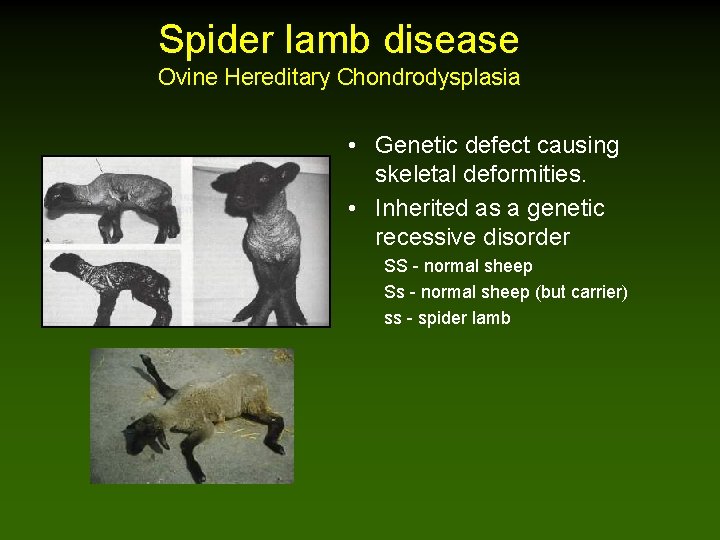
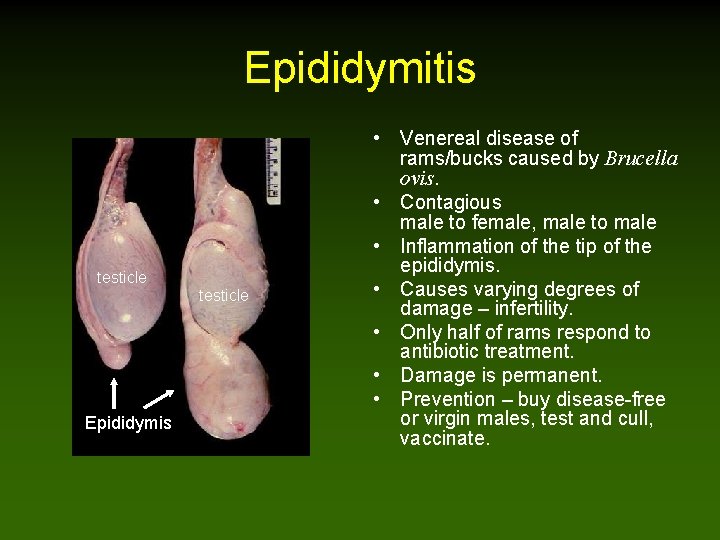
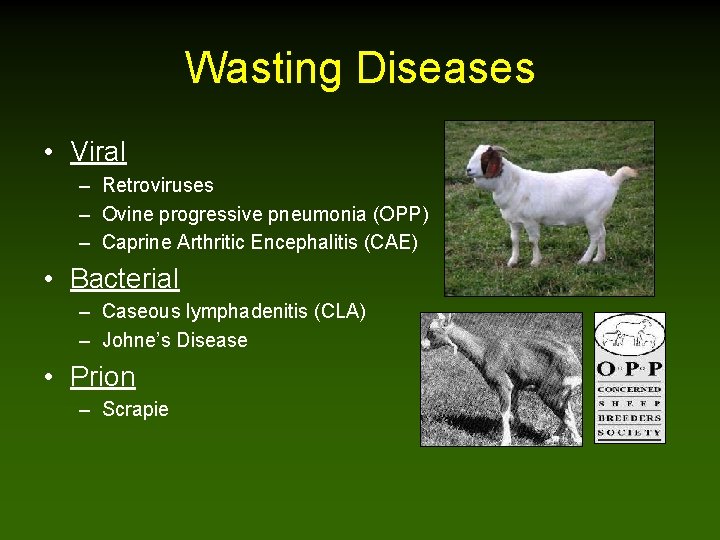
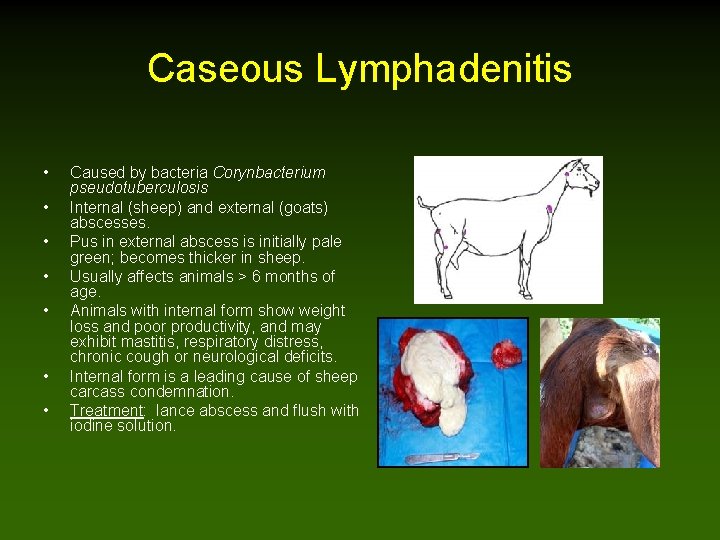
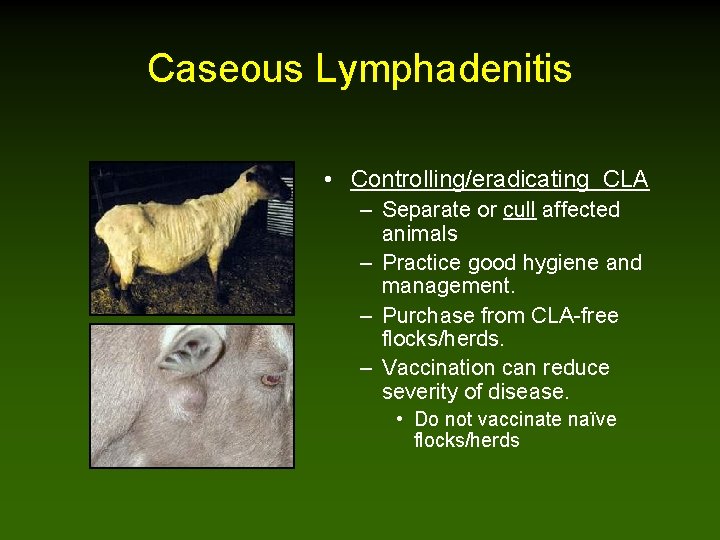
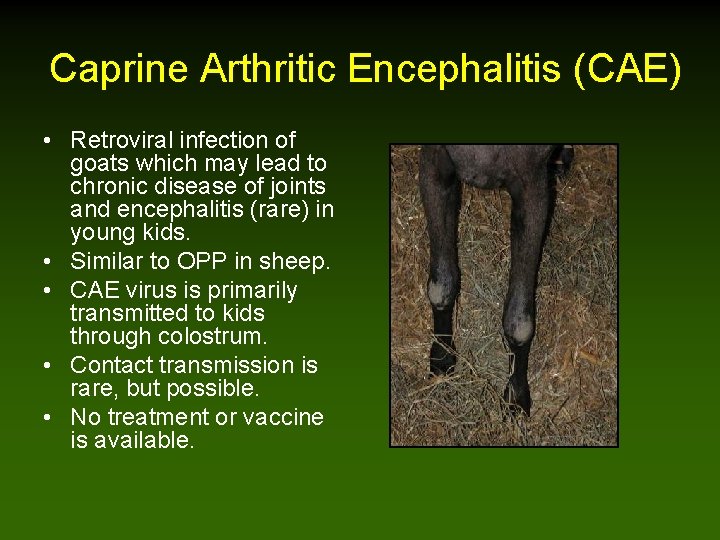
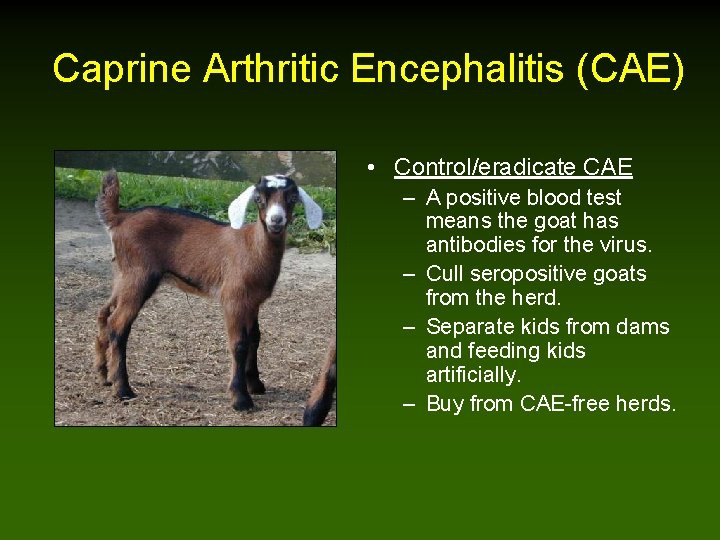
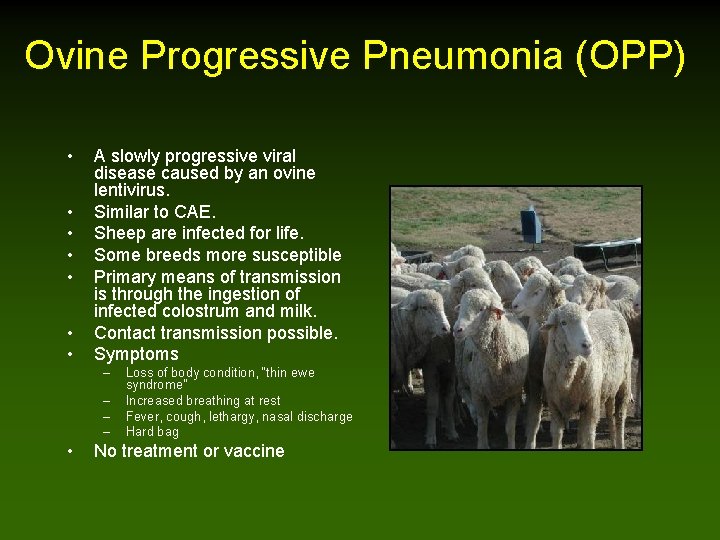
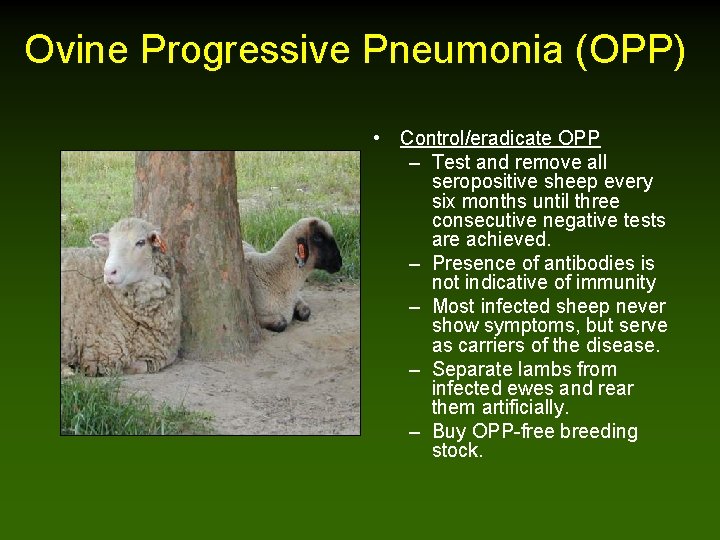
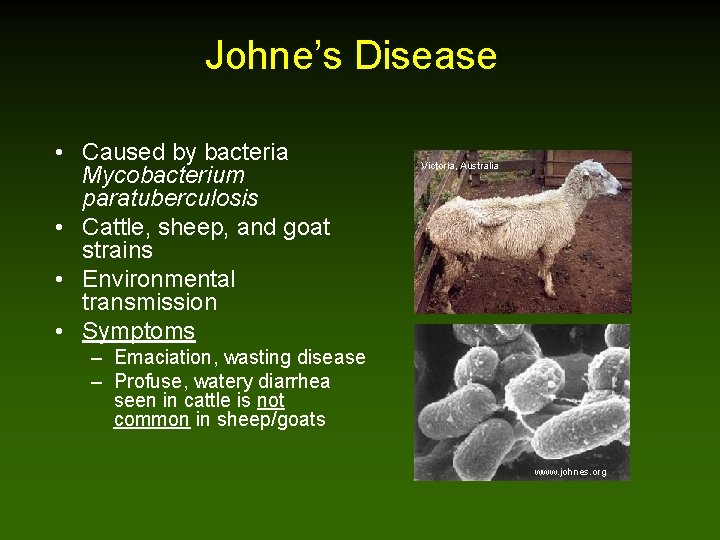
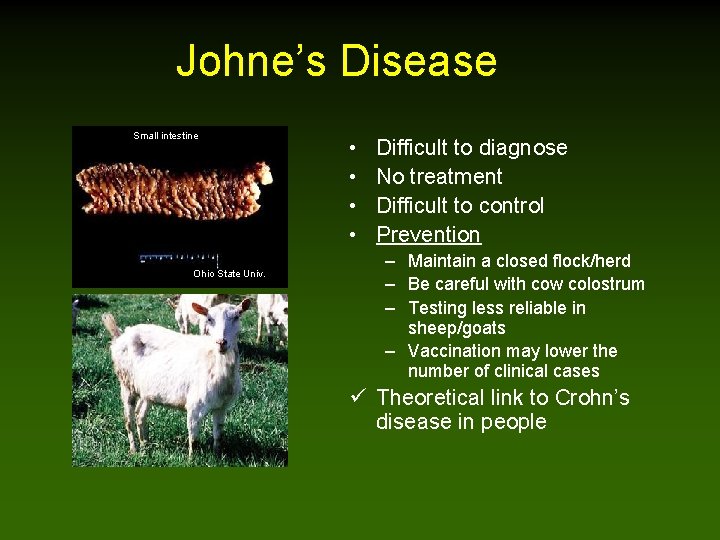
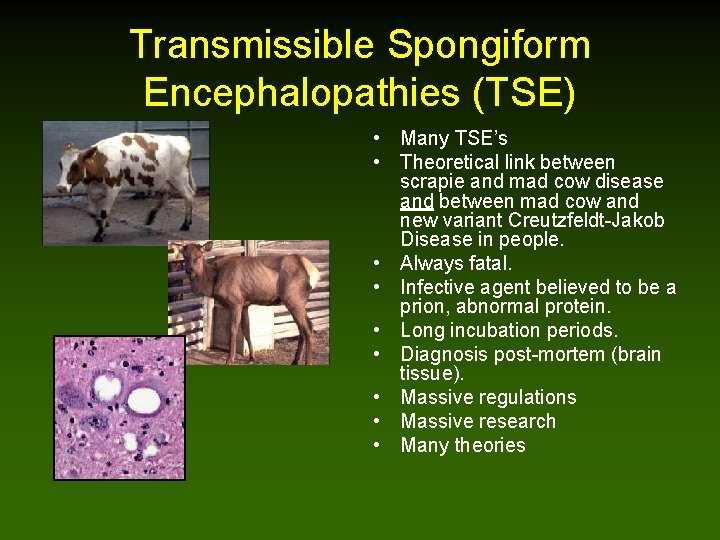
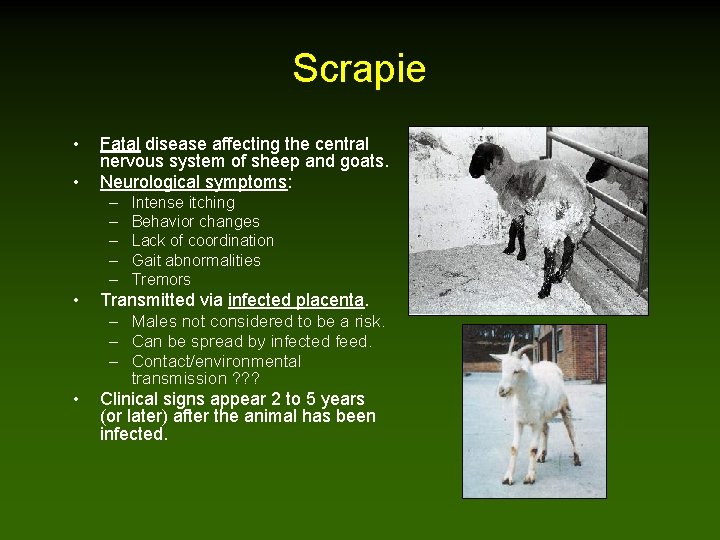
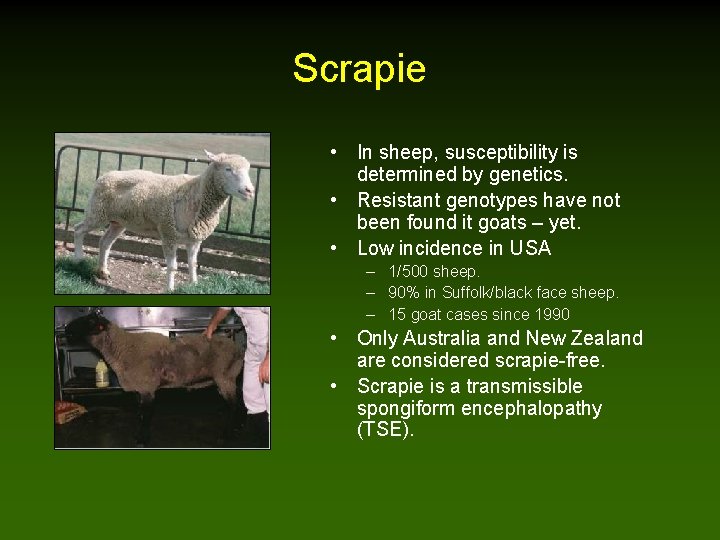
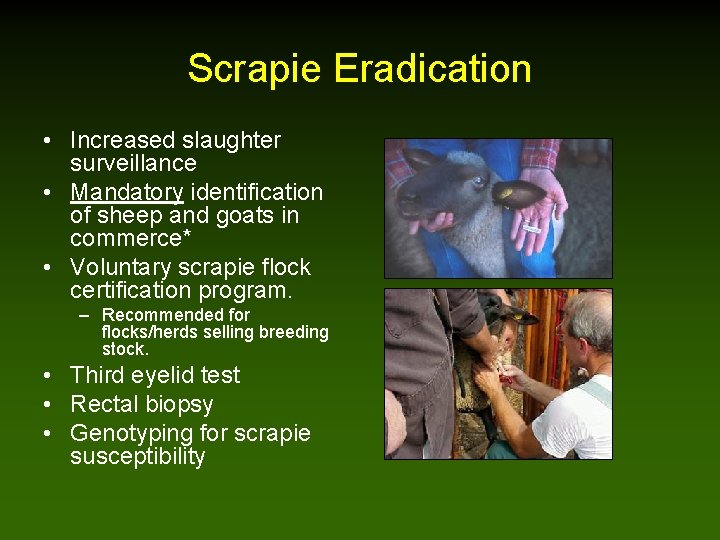
- Slides: 123

VT 270 Production Animals Sheep and Goat Management

Sheep Terminology • • Ovine = Sheep Ram – Intact male Ewe – Intact female Wether – Castrated male sheep or goat Lamb – Young sheep Lambing – Parturition Flock – A group of sheep

Sheep Management • Raised for -meat -wool • Specific breeds excel in one or the other – Dual purpose

Fine wool breeds • • Rambouillet Merino Debouillet These types comprise a large % of all range sheep • They do well on poor quality rangeland

Rambouillet

Merino

Debouillet

Medium wool breeds • Raised mainly for meat • Wool is secondary – Cheviot – Dorset – Suffolk – Hampshire – Columbia

Cheviot

Dorset

Suffolk

Hampshire

Columbia

Long wool breeds • Larger than other breeds • Extremely hardy and prolific, for sheep of course – Cotswold – Leicester – Lincoln

Cotswold

Leicester

Lincoln

Anatomy • • Split hooves 200 -300 lbs adult weight Split lip Ruminant like cattle

Anatomy Poll Rack Saddle Dock Flank Mutton Foreshank

Behavior • • EXTREMELY TIMID One scared sheep = a flock of scared sheep Will move together as a herd Improper restraint or handling can kill the animal • Herd a small group into a small pen, then capture and restrain the animal you need • Strong herd instinct, leave other sheep around if possible

Handling/Restraint • • Herd animal, use to your advantage Will almost always choose “flight” Understand their behavior Docking position

Nutrition • Particular in their eating habits – will eat “smelly” feed – will only drink clean water • Very efficient eaters – can graze closer to the ground – utilize forages – fed very little to no concentrates

Identification • Ear tags provide date of birth, ewe and ram information • Stenciling • Tattooing • Ear notching


Lamb Care • Must be kept warm • Remove placental membranes from lamb • Make sure they get colostrum within 1 hour • Apply iodine to the navel • Ear tag the lamb


Docking • Removal of the tail – improves sanitary conditions – increases reproductive productivity – increases value at market • Should perform before 2 weeks old • Remove tail between the vertebrae • If docked too short – rectal prolapse common


Docking • Methods – Knife – Emasculator – Elastrator – Hot irons – Pruning shears

Tail Docking

Castration • Sometimes just don’t do it – Rams worth more at market up to 5 months – need a while to determine breeding potential anyway • Methods – Knife – Emasculatome (Burdizzo) – Elastrator

Shearing • Shorn once a year – early spring • Some ewes are shorn just before lambing • Primary purpose for wool breeds

Shearing • Procedure – clean floor – proper restraint – sharp and clean shears – stretch skin – one smooth stroke



Goat Terminology • • Caprine = Goats Buck – Intact male Doe – Intact female Wether – Castrated male goat or sheep Kid – Young goat Kidding - Parturition Freshening - Parturition Herd – A group of goats

Goat Behavior • • • Very hardy Extremely curious Like a livestock dog Wear collars Love to climb, will climb on ANYTHING Use their curiosity to your advantage

Caprine Breeds • There are three basic types of goat breeds: – Dairy – Meat (Spanish goats) – Hair

Breeds • Common U. S. Breeds -Saanen -Nubian -Oberhasli -La Mancha -Boer -Angora

Saanen

Nubian

Oberhasli

La Mancha

Boer

Angora

Goats • • Primarily as pets in the U. S. “hobbyists” Some larger milking operations exist Similar to sheep in many regards

Restraint/Handling • Friendly, easier to handle • Also can be strong willed • Will lead with a halter

Goat Management • Nutrition and Reproduction basically is the same -same gestation -AI is more popular with goats

Milking • • Dairy goats should be milked twice a day Will average 1, 800 to 2, 000 lbs/milk/year Use a milking stanchion Done by hand or with individual machines

Debudding • • Removal of horn buds May decide you want to keep them Same procedure as in cattle Hot iron preferred method

Deodorizing • Bucks are very smelly • Musk glands behind horns • These can be removed -use a hot iron, just behind the horn buds -do at the same time as debudding

Preventative Medicine • Very similar to sheep -vaccines -worming schedule -goats are more hardy overall

Health care in sheep and goats Boer x Kiko • Starts with Prevention – Biosecurity – Vaccination program – Parasite control – Good nutrition – Early detection and treatment – Culling – Predator control

Biosecurity Security from transmission of infectious diseases, parasites, and pests • Buy from reputable breeders. • Know the health status of the animals you are purchasing. • Maintain a closed flock/herd. • Limit showing/ exhibiting. • Isolate new animals for at least 30 days.

Biosecurity Security from transmission of infectious diseases, parasites, and pests • Don’t loan or share rams or bucks. * • Don’t breed ewes or does for other producers. * • Do not mix your animals with other people’s animals. * • Don’t share equipment unless it is disinfected after each use. • Don’t let your shearer spread disease. • Limit access to your farm/animals. • Control cat, dog, bird, and rodent populations.

Sound Vaccination Program è Clostridial diseases Clostridium perfringins type C & D (overeating disease/enterotoxemia) Clostridium tetani (tetanus) – Vaccinate ewes/does 2 -6 weeks before parturition – Vaccine lambs/kids at ~6 and ~10 weeks of age – Vaccine rams, bucks, and wethers annually • Other diseases you could vaccinate for* – – – Some types of abortion Soremouth Caseous lymphadenitis (CL) Foot rot Pneumonia – E. coli scours – Other clostridial diseases – Rabies *Depends on disease prevalence and risk.

Deworming Parasite Control Program • • • Good management Pasture rest/rotation Alternative forages Zero grazing Mixed species grazing Genetic selection – between and within breeds • Fecal egg counts – Monitor pasture contamination – Test for drug resistance a Selective deworming

Good nutrition Better nutrition means stronger immune systems and disease resistance. • Feed balanced rations. • Feed according to production cycle and growth stage. • Supplement pasture and forage, when necessary and economical. • Provide free choice minerals. • Choose proper feeds for sheep and goats.

Early detection and treatment Early diagnosis is key to the control of health problems. • Know common signs of illness – – – – – Loss of body condition Poor appetite Lag behind flock/herd Lethargy Ears or head down (tail down) Poor hair/wool coat Teeth grinding (pain) Dirty hocks, tail, britch (scours) Anemia (barber pole worm) Fever (infection) normal body temp is 102 -103°F – Breathing (respiratory) – Gait (neurological)

Culling is one of the most powerful tools in managing animal health. • Most problems have a genetic component – – Foot rot Parasites Vaginal, rectal prolapses Inverted eye lids • Most disease conditions will repeat or get worse – Hoof problems – Mastitis – Vaginal prolapses Vaginal prolapse

Control predation Predation accounted for 37. 3% of sheep and goat losses in 2005. • Predator control options – – Fencing Management Livestock guardians Lethal control coyotes, dogs, bears, cougars, foxes, eagles, bobcats, wolves, vultures

Fencing Predator control starts with a good fence. • High-tensile, electric • Woven or net wire • Electric netting • Modify existing fences a Predator-proof gates

Management Options • Remove dead carcasses and anything else that attracts predators. • Complete confinement. • Lamb/kid in confinement. • Night penning. • Minimize use of high risk pastures. • Don’t lamb or kid in remote areas or large pastures. • Change lambing/kidding season. – Fall lambing/kidding tends to reduce predator losses. • Repellents, frightening devices. • Aversive conditioning.

Livestock Guardians 45% of sheep farms employ livestock guardians. • Guardian dogs (29. 6%) Great Pyrenees, Komondor, Akbash, Anatolian Shepherd, Maremma, Mastiff • Llamas (14. 2%) (female or gelding, not alpacas) • Donkeys (11. 4%) (standard sized, gelding or jenny) • Cattle – “flerd” need to be bonded

Lethal Predator Control Last resort, but sometimes necessary. • • • Shooting Trapping (foot hold, snare) Denning Livestock protection collar* M-44 cyanide injector* • Make sure you know the laws in your state/county. *Requires assistance of USDA APHIS Wildlife Services

Health problems of sheep and goats • Major health issues • Other common problems • A few other diseases • Wasting diseases

The major health issues • • • Goats eating chicory Internal Parasites Foot rot Diarrhea Respiratory Predation

Internal Parasites # 1 health problem affecting sheep and goats in warm, moist climates. ü Stomach/round worms barber pole worm • Tapeworms • Lungworms • Liver Flukes • Meningeal worm ü Coccidiosis

Coccidiosis Eimera sp. • Single-cell protozoa that damages the lining of the small intestines, where nutrient absorption occurs. • Can permanently stunt animals. • Species-specific • Causes scouring, weight loss, and death in lambs/kids. • Stress-induced NADIS

Coccidiosis Eimera sp. • • • Diagnosis – Fecal oocyte counts are of limited diagnostic value. Treatment (requires extra label drug use) – Corid (Amprolium) – Sulfa drugs Prevention – Good sanitation – Avoid overcrowding – Use of coccidiostats in feed, mineral, or water (before hand) • • Bovatec® (lasalocid) ** Rumensin® (monensin)* Deccox® (Decoquinate) ** Corid (lower dose than treatment)

Foot rot One of the most economically devastating diseases in the sheep/goat industry. • • Highly contagious. Caused by the interaction of two anaerobic bacteria: 1) Bacteroides nodosus in sheep/goat’s hoof (can only survive 10 -14 days) 2) • • Fusobacterium necrophorum in soil and manure (always) Most people BUY foot rot! Lameness is symptom. Gets in hoof. Has characteristic foul odor. Treat with aggressive hoof trimming, foot baths/soaks, antibiotics, moving to dry area, vaccination, and culling.

Foot Scald (is not foot rot) interdigital dermatitis, benign foot rot, non-virulent foot rot • Not contagious. • An infection between the toes. No involvement of the hoof. • Caused by Fusobacterium necrophorum, the bacteria that is always present on sheep and goat farms. • Activated by damp, muddy conditions; goes away when it’s dry. • Can treat/control with foot baths/soaks, moving to a dry area. Environmental

Diarrhea (scours) An increased frequency, fluidity, or volume of fecal excretion. • Infectious – Viral – Bacterial E. coli, salmonella – Protozoa coccidia, cryptosporidia • Non-infectious – – • • Parasites Nutrition Management Stress Often a symptom of other problems. Often self-limiting. Determine cause! Treatment: rehydration, antibiotics (if fever), antidiarrheal drugs (peptobismal, kaopectate, immodium), probiotics (yogurt).

Respiratory Problems • Respiratory complex: Pasteurella sp. , Mycoplasma, Chlamydia, Parainfluenza type 3 virus, etc. • Pasteurella sp. most common agent. • Characterized by high fever (106 -108°F) • May result in lung abscesses at slaughter. • Poor ventilation is a leading cause of respiratory problems. • Treat with antibiotics Other causes: OPP, lungworms, nasal bots, ketosis, acidosis

Other Common Problems • Nutritional • Reproductive • Skin

Nutritional / Metabolic • • • Pregnancy toxemia Milk fever Enterotoxemia Floppy kid syndrome Acidosis Urinary calculi Polioencephalomalacia Listeriosis Bloat Copper-related Selenium-related

Enterotoxemia Overeating disease, pulpy kidney disease • • Caused by bacteria, Clostridium perfringins type C & D Usually occurs in lambs/kids that are consuming large amounts of concentrate, but may also occur on pasture and with heavy milking dams Usually affects fastest growing lambs/kids. It is not uncommon to find them dead, with no prior symptoms. – Type C - 0 -30 days – Type D - >30 days • • • Predisposed by abrupt change in feed. Treatment (anti-toxin) is usually unrewarding. Prevention – Vaccination of pregnant dams and offspring* – Avoid sudden changes in diet don’t let creep feed run out – Low level feeding of antibiotics – Plenty of feeder space *Vaccine is not as effective in goats.

Floppy kid syndrome First documented in 1987 • Affects kids between 3 and 10 days of age (normal at birth) • Most common late in kidding season. • Causes muscle weakness, ataxia. • Cause unknown, but suspected to be gastrointestinal, a metabolic acidosis. • Treat with sodium bicarbonate and supportive therapy.

Lactic Acidosis Grain overload, grain poisoning • Caused by excessive consumption of concentrates/grain which changes acidity of rumen. • Treat with antacids, sodium bicarbonate. • Prevent with proper feed management. – Introduce and increase grain slowly in diet. – Feed whole grains, grains that digest slower – Include forage in diet. – Split grain feedings; feed forage first. – Buffering agents.

Urinary Calculi Water belly, urolithiasis, calculosis, kidney stones • Blockage of urethra by calculi (stones) causes retention of urine. • Wethers are most prone (early castration). • Treatment depends upon severity of condition. • Usually caused by too much phosphorus in the diet, i. e. an imbalance of calcium and phosphorus in the ration (< 1: 1).

Urinary Calculi Water belly, urolithiasis, calculosis, kidney stones • Proper ration balancing – – Ca: P ratio should be at least 2: 1. Legumes are a good source of calcium. Cereal grains have a poor ratio of Ca: P. Commercial feeds are balanced for Ca and P. • Do not add anything to balanced rations. – Ground limestone can be added to the ration as a source of calcium. – Free choice minerals do not ensure proper intake of minerals. – Adequate water intake important – Salt in ration (0. 5% ammonium chloride in diet)

Polioencephalomalacia PEM, polio, cerebrocortical necrosis • Affects the central nervous system. • Mimics other neurological conditions. • Caused by a thiamin (Vitamin B 1) deficiency not insufficient thiamine, but the inability to utilize it • Symptoms: blindness, star gazing. • Usually occurs in animals on high concentrate diets, but may also occur on pasture. • Treat with thiamine injections.

Listeriois • Caused by bacteria Listeria monocytogenes • Occurs 4 -6 weeks after bacteria is consumed. • Results in neurological symptoms: depression, disorientation, head tilt, facial paralysis, walking in circles. • Most commonly associated with the feeding of moldy silage. • High mortality; uterine form causes abortion. • Non-contagious. • If recognized early, treatment with high doses of antibiotics can be effective.

Bloat Occurs when rumen gas production > rate of gas elimination. • • Pasture/frothy – caused by consumption of legumous forages (alfalfa and clover), lush cereal grain pastures, wet grass, or finely ground grain. Treat with anti-foaming agent, mineral or vegetable oil. Prevent with good grazing management and poloxalene. Limit legume content of pastures to 50% or less. Consider non-bloating legumes (birdsfoot trefoil, lespedeza) Feedlot/free gas – associated with grain feeding Treat by passing stomach tube; rumenotomy in life threatening situations.

Copper-related Copper has important role in fertility and health. • Copper toxicity (more common, esp. sheep) – Caused by too much copper in diet or not enough molybdenum (and/or sulfur). – For sheep, there is a narrow range between Cu requirements and toxicity levels. – Goats need and tolerate higher levels of copper in their diet. • Copper deficiency – Anemia, ataxia – Swayback – Steely, stringy wool

Selenium-related Selenium and Vitamin E are interrelated. • Inadequate Se can affect growth, reproduction, immunity. • White muscle disease – Degeneration of the skeletal and cardiac muscles – Caused by a deficiency of selenium, vitamin E, or both – Can be a problem wherever selenium levels in the soil are low • Preventing/treating problems – Vitamin E/Selenium supplementation in feed, mineral mix, or via injections – Treat with Vitamin E/Se injections – Be careful when giving Se: it is more toxic than other trace minerals.

Reproductive Problems • • • Abortion Dystocia Metabolic: pregnancy toxemia and milk fever Mastitis Vaginal and uterine prolapses

Abortion Termination of pregnancy or birth of weak or deformed lambs or kids that die shortly after birth. • Bacterial a. Chlamydia Enzootic Abortion, EAE a. Vibriosis Vibrio campylobacter – Leptospirosis – Salmonella • Viral – Cache Valley Virus (mosquito vector) • Protozoa a. Toxoplasmosis caused by protozoa that causes coccidiosis in cats The organisms that cause abortion in ewes/does can cause abortion in women.

Dealing with an abortion storm Over 5% of herd/flock – seek veterinary assistance • Prevent spread of infectious agents. • Strict sanitation. • Disposal of infective material. • Isolation of aborting females. • Submit proper samples to a diagnostic lab. • Blood sampling. • Immediate vaccination. • Use of antibiotics. The organisms that cause abortion in ewes/does can cause abortion in women.

Preventing abortion storms • Maintain a closed flock/herd. • Vaccination • Low level feeding of antibiotics. • Prevent contamination of feed and water. • Control cat population. • Avoid stressful, overcrowded, and/or unsanitary conditions. • Feed Rumensin® or Deccox®. The organisms that cause abortion in ewes/does can cause abortion in women.

Dystocia • Abortion – dead or deformed babies • Abnormal presentation of fetus(es) • Unusually large fetus • Small pelvic area • Fat dam • Vaginal prolapse • Ring womb – Failure of cervix to dilate

Dystocia • Know when to assist – Straining for over an hour with no progress. • Know how to assist – Be clean and gentle. – Use plenty of lubricant. – Determine presentation/ problem. – Have ewe/doe stand or elevate her hindquarters. – Use antibiotic on any ewe/doe you assist.

Pregnancy toxemia ketosis, twin lamb disease, lambing paralysis, hypoglycemia • • • Low blood sugar caused by an inadequate intake of energy during late gestation. Breakdown of fat produces toxic ketone bodies. Mostly commonly affects fat, thin, old, and/or females carrying multiple births. Symptoms: lethargy, sluggishness, lack of appetite, poor muscle control, inability to rise. Treatment is to increase blood sugar by giving glucose orally, sub -Q, or IV. C-section in extreme cases. Prevent by providing enough energy in diet and providing adequate feeder space.

Milk Fever Hypocalcemia, Parturient paresis • Low blood calcium • Caused by inadequate intake of calcium during late pregnancy or inability to mobilize calcium reserves prior to or after parturition. • Similar symptoms as pregnancy toxemia. • Can occur before or after parturition. • Treat with commercial calcium solutions sub-Q or IV. • Prevent by providing proper amount of calcium in diet. • Don’t under or overfeed calcium. Save alfalfa hay for lactation. Feed mixed hay in late gestation.

Prolapses More common in sheep than goats. • Three kinds – Vaginal Rectal Vaginal • Chronic • Genetic component – Uterine • Not genetic • Life-threatening – Rectal • Not usually reproductive • Risk factors: – – – Sex Diet Genetics Health Length of tail dock Uterine

Mastitis A major reason for culling ewes (46%) • Inflammation of the udder • Usually caused by bacteria Streptococcus sp. , Staphylococcus sp. , Pasteurella sp. , and coliforms, such as E. coli. • Acute, chronic, or sub-clinical. • Both halves - could be OPP. • Treat with antibiotics – Systemic – Intramammary • Prevention – – – Good sanitation Proper management at weaning. Dry cow treatment Later weaning Cull females with “lumpy” udders.

Diseases affecting the skin • Soremouth • Ringworm • External parasites

Soremouth contagious ecthyma, contagious pustular dermatitis, scabby mouth, orf • Most common skin disease of sheep and goats. • Caused by a virus from the pox family. • Causes lesions on mouth, lips, nostrils (teats, scrotum). • Problematic during lambing/ kidding season and if you show/exhibit. • Normally runs its course in 1 to 4 weeks. • Very contagious, including to people (orf). • There is a live vaccine for it. (don’t vaccinate if you’ve never had it).

Ringworm • Fungal disease • Usually occurs in show lambs. – club lamb fungus • Results in hair loss, scabs, lesions, and pustules. • Contagious, to humans as well. • Treat with fungicides.

External Parasites • Keds – Melophagus ovinus • • • Ticks Lice Mites Blowflies/maggots Nasal bots

External Parasites • Treat with insecticides – dip, spray, or pour- on. • Some anthelmintics are effective against biting parasites (e. g. ivermectin) • Clean, dry environment

Flystrike - Myiasis • Caused by parasitic dipterous fly larvae feeding on the host’s necrotic or living tissue. • Occurs when flies lay eggs in moist wool or open wound or break in the skin. • Can cause death. • Prevent by proper docking, mulesling, and insecticide treatments. • Treat with insecticide applications.

Nasal Bots Head bot, sheep bot, Oestrus ovis • Occurs when female fly lays batches of newly hatched larvae in sheep or goat’s nostrils. • 6 -month life cycle. May be 2 generations per year. • Symptoms: sneezing, coughing, jerky movements of head. • Can cause bacterial infections and reduce performance. • Treat with ivermectin sheep drench.

A few other interesting health issues • • • Hypothermia and Starvation Tetanus Pinkeye Entropion Spider lamb disease Epididymitis

Hypothermia and Starvation • Starvation - #1 cause of death – Make sure dam has milk and lets lambs/kids nurse – Make sure lambs/kids consume adequate colostrum (check bellies). – A well-fed lamb/kid stretches when it rises. • Mild hypothermia (99 -101º F) – Dry and warm up lamb/kid – Tube feed colostrum, if necessary • Severe hypothermia (<99º F) – Intra peritoneal injection of 20% dextrose – Slowly warm up lamb/kid – Feed colostrum by stomach tube

Tetanus • • • Clostridium tetani In soil on most farms Usually related to docking and castrating, especially by elastrator bands – Oxygen-starved tissues are ideal for tetanus organism • • Any puncture wound can harbor the tetanus organism. Symptoms: stiffness caused by muscle contractions. Treatable in early stages with antitoxin. Prevent with vaccination – Vaccinate ewe/doe with tetanus toxoid prior to parturition OR – Vaccinate lamb/kid with tetanus antitoxin at time of docking, castrating, disbudding to provide immediate temporary immunity.

Pink Eye • • • Keratoconjunctivitis Most common causes are Mycoplasma and Chlamydia. Different agent than affects cattle Highly contagious Usually runs its course in ~ 3 weeks Treat with topical and systemic antibiotics

Entropion Inverted eyelid • Lower eyelid is inverted, causing the eyelashes of the lower lid to brush against the eye • Causes irritation and tearing • Treat with antibiotics or staples, sutures, or clips • Heritable trait – don’t use rams or bucks with this trait. Infovets. com

Spider lamb disease Ovine Hereditary Chondrodysplasia • Genetic defect causing skeletal deformities. • Inherited as a genetic recessive disorder SS - normal sheep Ss - normal sheep (but carrier) ss - spider lamb

Epididymitis testicle Epididymis • Venereal disease of rams/bucks caused by Brucella ovis. • Contagious male to female, male to male • Inflammation of the tip of the epididymis. • Causes varying degrees of damage – infertility. • Only half of rams respond to antibiotic treatment. • Damage is permanent. • Prevention – buy disease-free or virgin males, test and cull, vaccinate.

Wasting Diseases • Viral – Retroviruses – Ovine progressive pneumonia (OPP) – Caprine Arthritic Encephalitis (CAE) • Bacterial – Caseous lymphadenitis (CLA) – Johne’s Disease • Prion – Scrapie

Caseous Lymphadenitis • • Caused by bacteria Corynbacterium pseudotuberculosis Internal (sheep) and external (goats) abscesses. Pus in external abscess is initially pale green; becomes thicker in sheep. Usually affects animals > 6 months of age. Animals with internal form show weight loss and poor productivity, and may exhibit mastitis, respiratory distress, chronic cough or neurological deficits. Internal form is a leading cause of sheep carcass condemnation. Treatment: lance abscess and flush with iodine solution.

Caseous Lymphadenitis • Controlling/eradicating CLA – Separate or cull affected animals – Practice good hygiene and management. – Purchase from CLA-free flocks/herds. – Vaccination can reduce severity of disease. • Do not vaccinate naïve flocks/herds

Caprine Arthritic Encephalitis (CAE) • Retroviral infection of goats which may lead to chronic disease of joints and encephalitis (rare) in young kids. • Similar to OPP in sheep. • CAE virus is primarily transmitted to kids through colostrum. • Contact transmission is rare, but possible. • No treatment or vaccine is available.

Caprine Arthritic Encephalitis (CAE) • Control/eradicate CAE – A positive blood test means the goat has antibodies for the virus. – Cull seropositive goats from the herd. – Separate kids from dams and feeding kids artificially. – Buy from CAE-free herds.

Ovine Progressive Pneumonia (OPP) • • A slowly progressive viral disease caused by an ovine lentivirus. Similar to CAE. Sheep are infected for life. Some breeds more susceptible Primary means of transmission is through the ingestion of infected colostrum and milk. Contact transmission possible. Symptoms – – • Loss of body condition, “thin ewe syndrome” Increased breathing at rest Fever, cough, lethargy, nasal discharge Hard bag No treatment or vaccine

Ovine Progressive Pneumonia (OPP) • Control/eradicate OPP – Test and remove all seropositive sheep every six months until three consecutive negative tests are achieved. – Presence of antibodies is not indicative of immunity – Most infected sheep never show symptoms, but serve as carriers of the disease. – Separate lambs from infected ewes and rear them artificially. – Buy OPP-free breeding stock.

Johne’s Disease • Caused by bacteria Mycobacterium paratuberculosis • Cattle, sheep, and goat strains • Environmental transmission • Symptoms Victoria, Australia Small intestine – Emaciation, wasting disease – Profuse, watery diarrhea seen in cattle is not common in sheep/goats Ohio www. johnes. org State University

Johne’s Disease Small intestine Ohio State Univ. • • Difficult to diagnose No treatment Difficult to control Prevention – Maintain a closed flock/herd – Be careful with cow colostrum – Testing less reliable in sheep/goats – Vaccination may lower the number of clinical cases ü Theoretical link to Crohn’s disease in people

Transmissible Spongiform Encephalopathies (TSE) • Many TSE’s • Theoretical link between scrapie and mad cow disease and between mad cow and new variant Creutzfeldt-Jakob Disease in people. • Always fatal. • Infective agent believed to be a prion, abnormal protein. • Long incubation periods. • Diagnosis post-mortem (brain tissue). • Massive regulations • Massive research • Many theories

Scrapie • • Fatal disease affecting the central nervous system of sheep and goats. Neurological symptoms: – – – • Intense itching Behavior changes Lack of coordination Gait abnormalities Tremors Transmitted via infected placenta. – Males not considered to be a risk. – Can be spread by infected feed. – Contact/environmental transmission ? ? ? • Clinical signs appear 2 to 5 years (or later) after the animal has been infected.

Scrapie • In sheep, susceptibility is determined by genetics. • Resistant genotypes have not been found it goats – yet. • Low incidence in USA – 1/500 sheep. – 90% in Suffolk/black face sheep. – 15 goat cases since 1990 • Only Australia and New Zealand are considered scrapie-free. • Scrapie is a transmissible spongiform encephalopathy (TSE).

Scrapie Eradication • Increased slaughter surveillance • Mandatory identification of sheep and goats in commerce* • Voluntary scrapie flock certification program. – Recommended for flocks/herds selling breeding stock. • Third eyelid test • Rectal biopsy • Genotyping for scrapie susceptibility